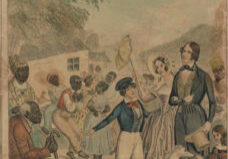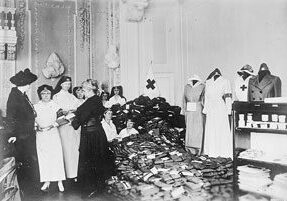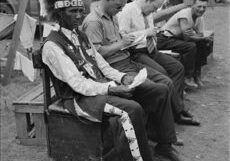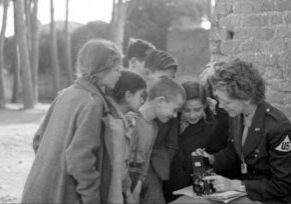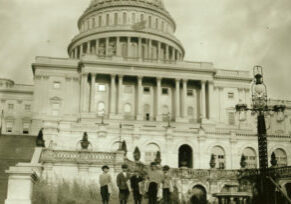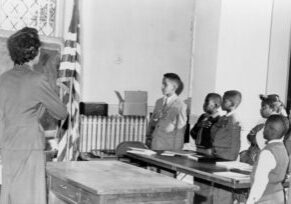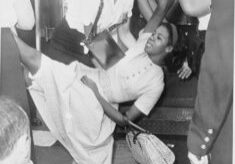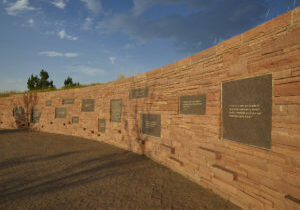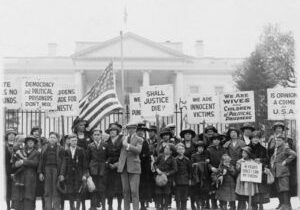Lesson Plans
Illustrating America
Students explore the stories we tell when illustrating America through primary source analysis, reflection, and creation.
Women’s Rights: Seneca Falls & Beyond
Students investigate a key event in the history of women's rights and the importance of commemorating the struggle for equal rights, then consider possible contributions to help ensure a future with greater equality.
Community Service: Washington Chapter
Students analyze primary source photographs and newspaper articles to explore the importance of community service then and now.
Bonus Veterans
Students analyze primary sources to learn about the Bonus Army and to consider the question, How does informing ourselves about the past guide us in the future?
Snap a Photo: Agent of Change
Students consider point of view and purpose while they engage in careful observation of Lewis Hine’s photographs that exposed child working conditions, generate and test hypotheses based on evidence, and reflect on their learning by applying it to related questions about a photographer’s point of view or purpose. Teachers may choose to have students extend their inquiry by pairing pictures and poems to tell stories (step 8), then investigate child labor today or another contemporary issue related to children and make connections by writing a poem about a related illustrative image they find (steps 9-10).
Congress and Child Labor
Students analyze primary source images and posters to explore why Congress decided long ago that it was important to pass labor laws to protect children, then apply what they have learned by creating their own historical poster. After, students could investigate child labor today or another contemporary issue related to children and make connections by creating a poster to raise awareness of the issue.
Capture the Flag
Students investigate primary sources to explore the various ways people use the United States flag to show characteristics such as pride, loyalty, and unity for the nation, then create a collage showing examples of celebration and remembrance. After, students can make connections by creating a collage, drawing, poem, video, etc., that shows how the flag makes them feel.
Civil Rights and Civic Action
Students deepen their understanding and personal integration of the concept of commitment to civic service by examining the historic contribution of young people in shaping positive changes in America using primary sources from the Library of Congress. Students explore the civic service accomplishments of young people to help bring about social change and identify the potential of young people in creating positive change through civic service. Students then identify characteristics of civic activists as well as current problems or causes about which they are passionate and draft an action plan to affect change.
Gun Violence and Next-Generation Coalitions
Students deepen understanding of civic action through a focus on the empowerment that citizens gain through building coalitions through an exploration of the accomplishments of young people to help bring about changes through civic action. Referencing Library of Congress resources and sources of the Columbine school shooting, students identify the potential of young people in creating positive change through civic action. Students then examine current problems or causes about which they are passionate and draft an action plan.
Kids, Collaboration, and Coalitions
Students develop their personal understanding of their membership in a civic community by examining the historic contribution of young people in shaping positive changes in America using primary sources from the Library of Congress and other sources. Students explore coalition-building accomplishments of young people recognizing that any individual, regardless of age, race, status, or gender has the potential to help bring about changes through working together. Students then identify characteristics of collaboration and creating coalitions in order to build their understanding of civic community.

